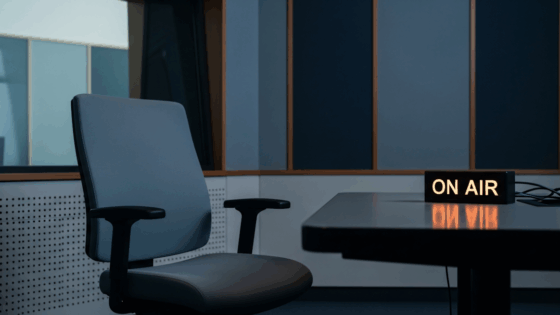on
BY SIMONE J. SMITH
The world is starting to notice how many young athletes are DYING after they take COVID-19 medical injection. Athletes are collapsing on the playing field suffering from “among other serious chronic diseases,” nervous system disorders, breathing difficulties, and cardiac events. Aside from soccer players, athletes who have succumbed to cardiac events have been seen in basketball, hockey, rugby, marathons, triathlons, BMX riders, and even referees.
While in some of these individuals’ cardiologists found evidence of coronary disease and scars from earlier silent heart attacks, there is one mechanism that’s getting no attention at all: the excitotoxin damage caused by food additives and the artificial sweetener aspartame. This is despite growing evidence that the excitotoxic mechanism plays a major role in cardiac disease.
According to the National Library of Medicine (https://pubmed.ncbi.nlm.nih.gov/7854587/), the most frequently encountered food excitotoxin is glutamate (Glu), which is commercially added to many foods despite evidence that it can freely penetrate certain brain regions and rapidly destroy neurons. Excitotoxins are supposed to enhance flavour and excite your tastebuds, but these common food additives also overexcite your cells.
What you may not realize is how many excitotoxins you consume daily. Many low-calorie sodas, highly flavoured snacks, and processed foods of all kinds contain excitotoxins. They are a class of chemicals (usually amino acids) that overstimulate neuron receptors. Neuron receptors allow brain cells to communicate with each other, but when they’re exposed to excitotoxins, they fire impulses at such a rapid rate that they become exhausted. Several hours later, these depleted neurons die.
Previously, it was thought that excitotoxic food additives, such as monosodium glutamate and aspartic acid in aspartame, cause their damage in the cardiovascular centres in the brain stem and/or by over-stimulating sympathetic centres in the hypothalamus of the brain.
Dr. Russell Blaylock, an author, and neurosurgeon helps to explain the relationship between sudden cardiac death, especially in athletes, and excitotoxic damage caused by food additives and artificial sweeteners.
According to CDC, over 460,000 people annually die of a disorder called sudden cardiac death. This condition strikes otherwise healthy people who have experienced no obvious symptoms of heart disease prior to their abrupt deaths.
A particularly deadly combination occurs in young athletes: Low magnesium intake, high calcium intake, low intake of omega-3 fatty acids, and excitotoxins in food additives. Strenuous exercise, especially in extreme heat, depletes the body’s magnesium stores, as does consumption of carbonated drinks and taking calcium supplements.
Also, adrenalin secretion increased during exercise, intensifies heart muscle irritability and further loss of magnesium as well. When calcium supplements are taken in the face of an existing magnesium deficiency, both magnesium and calcium are driven into the bones, producing a sudden magnesium-depletion crisis.
Low magnesium produces seizures and causes sudden cardiac arrest. In a classic experiment, it was found that stressing magnesium-deficient animals resulted in an almost 100% mortality from sudden cardiac arrest. Adding magnesium reduced mortality dramatically. A considerable body of evidence has shown that low omega-3 fat intake significantly increases the risk and severity of cardiac arrhythmias, the main cause of sudden cardiac death.
Finally, recent research has shown that the brain is not the only tissue having glutamate receptors. Numerous glutamate receptors have been found both within the heart’s electrical conduction system and the heart muscle itself.
When an excess of food-borne excitotoxins, such as MSG, hydrolysed protein soy protein isolate and concentrate, natural flavouring, sodium caseinate and aspartate from aspartame, are consumed, these glutamate receptors are over-stimulated, producing cardiac arrhythmias. When magnesium stores are low, as we see in athletes, the glutamate receptors are so sensitive that even low levels of these excitotoxins can result in cardiac arrhythmias and death.
High consumption of aspartame adds an additional cardiac muscle toxin: methanol. A number of studies have shown that consuming aspartame and MSG (and similar excitotoxins) together greatly magnifies the toxicity.
Young people live on junk foods, most of which contain a number of excitotoxic additives. Several studies have shown that the levels consumed by our youth equal those that cause damage in experimental animals. Unfortunately, humans are 5X more sensitive to these toxins than any animal.
Most people over age fifty years are depleted of magnesium, have low omega-3 fat intakes, are under stress, and take a number of medications that compromise nutrition, especially magnesium levels. Because seniors are more likely to have coronary artery disease plus other medical conditions, their risk of sudden cardiac death is even higher.
Both athletes and those over age forty-five should take magnesium supplements, antioxidants, omega-3 oils, eat more vegetables and avoid foods and artificial sweeteners containing excitotoxins such as aspartame and MSG. This accomplishes a lot more than attempting to rescue a victim with an external defibrillator after the fact.
Dr. Blaylock’s website is http://www.russellblaylockmd.com. He is the author of “Excitotoxins: The Taste That Kills and Health & Nutrition Secrets to Save Your Life.” He can be seen in the movie on aspartame, “Sweet Misery: A Poisoned World.”
In the movie, “Sweet Misery,” Diane Fleming is interviewed from prison. Her husband, an aspartame addict, who played basketball several times a week, died and she was charged with his death. Several experts have written affidavits that Charles Fleming died from aspartame.
Copies are available from www.amazon.com [Also see the page at: http://www.wnho.net/sweet_misery_movie.htm]
Stay in the loop with exclusive news, stories, and insights—delivered straight to your inbox. No fluff, just real content that matters. Sign up today!
We, as humans are guaranteed certain things in life: stressors, taxes, bills and death are the first thoughts that pop to mind. It is not uncommon that many people find a hard time dealing with these daily life stressors, and at times will find themselves losing control over their lives. Simone Jennifer Smith’s great passion is using the gifts that have been given to her, to help educate her clients on how to live meaningful lives. The Hear to Help Team consists of powerfully motivated individuals, who like Simone, see that there is a need in this world; a need for real connection. As the founder and Director of Hear 2 Help, Simone leads a team that goes out into the community day to day, servicing families with their educational, legal and mental health needs.Her dedication shows in her Toronto Caribbean newspaper articles, and in her role as a host on the TCN TV Network.













